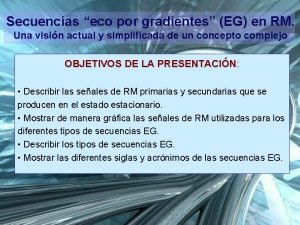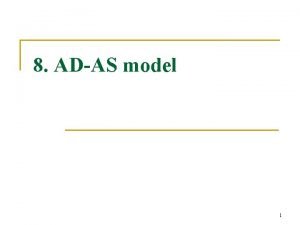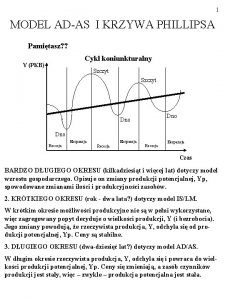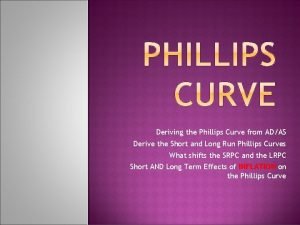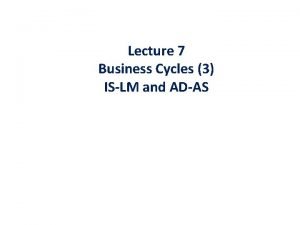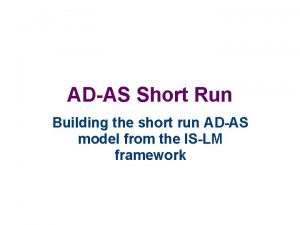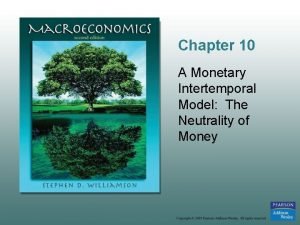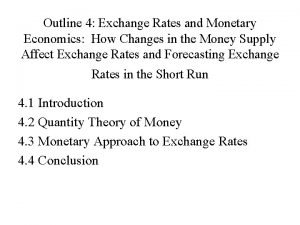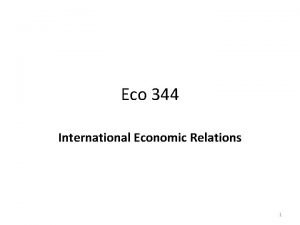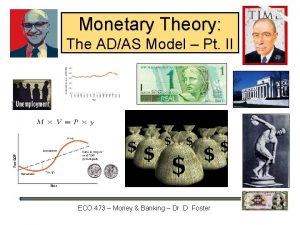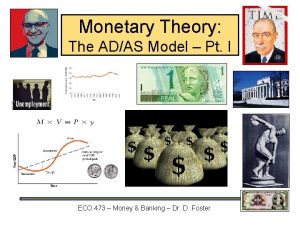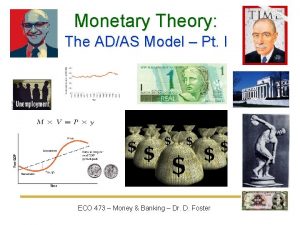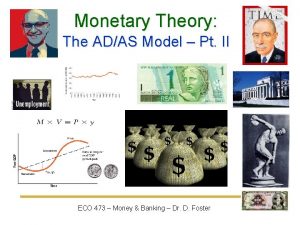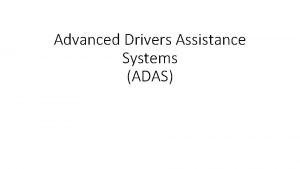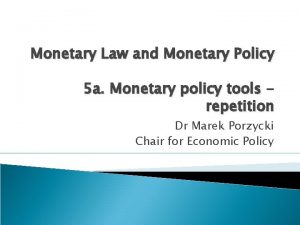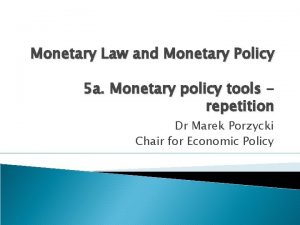Monetary Theory The ADAS Model Pt II ECO


















- Slides: 18

Monetary Theory: The AD/AS Model – Pt. II ECO 473 – Money & Banking – Dr. D. Foster

AS/AD Model – Hints at 4 types of changes: P ASLR AS 1 • Inflation with growth due to rising AD. • Depression with deflation due to falling AD. • Growth with deflation due to rising AS. • Depression with inflation due to falling AS. (stagflation) P 1 AD 1 Q* Q or R-GDP

The Transmission Mechanism of Monetary Policy • Fed buys bonds. • Bank reserves rise, as do their excess reserves. • The money supply expands. • Interest rates fall to equate MS with MD. • Investment spending rises. • Income rises. And, if the Fed sells bonds …

The Transmission Mechanism of Monetary Policy • Assume: • money multiplier is 2. 5 • interest rates change by 1% per $80 b ΔMS • investment changes by $35 b per 1% Δr • income rises $5 for each $1 increase in spending How much will income change by if the Fed buys $10 billion worth of bonds? Change in the monetary base = +$10 billion Change in the money supply = +$25 billion How much will income change by if the Fed sells Change in interest rates = -0. 3125% $15 billion worth of bonds? Change in investment = +$10. 9 billion Change in income = +$54. 7 billion

Worksheet: Monetary Transmission Mechanism Where we have the following information: • The money multiplier is 3. 25, or is derived from the formula. • Interest rates will change by 1. 5% for each $65 billion change in the money supply. • Investment will change by $122 billion for each 2% change in interest rates. • Income will change by $7 for each $2 change in investment. • The unemployment rate will change by. 46% for each $150 billion change in income, up to a maximum change of +1. 84%. • If the change in income exceeds +$600 billion, the effects will be strictly inflationary (if income rises) or deflationary (if income falls). For each additional $150 billion in income, the inflation rate will change by 2. 1%.

Worksheet: Monetary Transmission Mechanism 1. What will be the impact on income, unemployment and inflation if the Fed buys $15 billion worth of bonds? 2. What will be the impact on income, unemployment and inflation if the Fed sells $25 billion worth of bonds? 3. If the Fed wants to raise income by $350 billion, how much should it buy/sell in Treasury bonds? 4. If the Fed wants to lower the unemployment rate by 1%, how much should it buy/sell in Treasury bonds?

Are Monetary Policies Effective? • Given the problem with lags … • In the Short Run only: Ø If they are unexpected. Ø If wage/price rigidities persist. Ø Over time, these should be less likely. • How effective? Ø The liquidity effect – How responsive are interest rates to changes in the money supply? [∆i is 3% …] Ø The interest elasticity of investment – How responsive is investment to a change in interest rates? [∆I is $50 b. …]

Velocity of M 1: 1959 - 1981 Annual growth 4. 5%

Velocity of M 1: 1970 - 2019 Q 3: 5. 565

Velocity of M 2: 1970 - 2019 Q 3: 1. 441

Velocity of MZM: 1970 - 2019 Q 3: 1. 308

Monetarist vs. Keynesian What are the initial causes of a recession? Money Supply Investment The Fed as source. Lack of “animal spirits. ” Monetary cause No real theory. How fast can the economy recover? Very fast. Not very fast. Gov’t as source of disruption. Market instability. Markets are quite robust. May have long-term unemployment problem.

Monetarist vs. Keynesian How does monetary policy help? It has a direct effect on consumer spending. Works through effects on investment spending. Very powerful. Likely ineffective. “Pushing on a string. ” Interest sensitivity high. Investment elasticity high. Interest sensitivity low. Investment elasticity low. Should the government aid in the recovery from recession? No. Yes. Use rules. Use discretion. Monetary rules will provide the necessary effect. Fiscal policies, especially gov’t spending are best.

Keynesian vs. Monetarist & the SR AS P ASLR AS - Monetarist The AS is flat in the Keynesian view and steep according to the Monetarists. AS - Keynes P 1 AD 1 So, a decrease in the AD will have different consequences in the two theories. AD 2 Q* Q or R-GDP

Persistent inflation & inflationary expectations P AS 4 AS 5 P 4 P 3 P 2 P 1 Q* AS 3 The Fed tries to AS 2 reduce unemployment and increase output by AS 1 MS. This AD. With a lag, the AS will decrease so all we see is P. The Fed keeps trying, but now no lag in AS. If the Fed stops AD 2 inflationary AD 2 expectations AD 1 will continue to AS, now Q. Q or R-GDP

How can we eliminate inflation? By AS (short run)? No! Inflation is a monetary phenomenon!. • Still … these are tried: • Wage & price controls • Tax-based Incomes policies (TIPs) • Supply-side incentives to boost output. • Remove barriers that keep wages/prices from falling. By AD! Yes! Inflation is a monetary phenomenon! § But, we’ll have to contend with inflationary expectations. • Gradualism approach • Going cold turkey § What of the role of size of government? Slower growth & weaker recoveries.

Current Problems & Policy Questions Prices • Decreased AD sends us into recession. ASLR ASSR • Fed expands the MS to stimulate economic growth. Doesn’t work. P 3 AD’’’ P 1 • Eventually, there’s an overreaction. AD P 2 AD’’ AD’ Q’ Q* Q = Real GDP • Sharply rising AD leads to high levels of inflation. What will be the longer term effects Was Obama of the Fed’s having a Keynesian? MB and ER?

Monetary Theory: The AD/AS Model – Pt. II ECO 473 – Money & Banking – Dr. D. Foster
